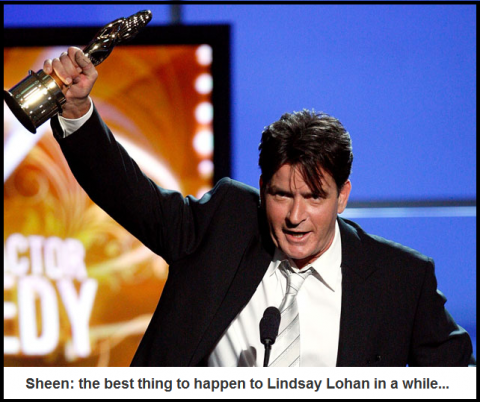Yesterday’s newsworthy satisfactions were marred only by the passage of a spending bill that unfortunately will allow the U.S. Government to avoid shutting down. Putting aside this disappointment, which was not unexpected, all seemed right with the world: stocks got bitch-slapped for a change, bullion prices screamed, Charlie Sheen and Col. Qadaffy appeared headed for well-deserved oblivion (Sheen could conceivably fare better than his Libyan counterpart, since there will be no Kadhafi reruns), and winter temperatures here in Boulder, Colorado, hovered near the mid-60s. What more could one have asked? Actually, our perfect day would have doubled or even tripled the Dow’s 168-point decline, since every significant selloff helps bring America closer to the day when investors and the world-at-large forsake the matrix of lies, delusions and hubris that have made true economic recovery all but impossible.
 Alas, the spinmeisters and news media, if not the rest of us, continue to cling to the Bernanke narrative that the economy is returning to health, albeit very slowly. That’s despite deflation in the real estate sector so severe and prolonged that even optimists no longer regard it as cyclical; soaring food and energy prices; and budget crises at all levels of government that will ultimately push unemployment to heights not seen since the 1930s. Under the circumstances, you can hardly blame us for betting against every stock-market rally. We’ve been doing this reflexively for months: getting short at each minor Hidden Pivot rally target in expectations that one of them will prove to be The Top – the whimpering end of the Granddaddy of All Short Squeezes launched almost exactly two years ago.
Alas, the spinmeisters and news media, if not the rest of us, continue to cling to the Bernanke narrative that the economy is returning to health, albeit very slowly. That’s despite deflation in the real estate sector so severe and prolonged that even optimists no longer regard it as cyclical; soaring food and energy prices; and budget crises at all levels of government that will ultimately push unemployment to heights not seen since the 1930s. Under the circumstances, you can hardly blame us for betting against every stock-market rally. We’ve been doing this reflexively for months: getting short at each minor Hidden Pivot rally target in expectations that one of them will prove to be The Top – the whimpering end of the Granddaddy of All Short Squeezes launched almost exactly two years ago.
Locking in Gains
Our strategy has benefited from consistent (although not necessarily repeatable) success at predicting tradable tops, even if none has proved particularly enduring. A week ago, for instance, Rick’s Picks prepared subscribers to short the QQQ, a popular trading vehicle, if it hit a “Hidden Pivot” resistance at 57.96. A tedious grind higher achieved that target four days later, and so we got short using a very tight stop-loss to theoretically limit our risk. Specifically, we bought four March 57 puts for a total of $244, and although we stood ready to dump them if the QQQs had gone even slightly higher, hitting 58.12, the rally never exceeded 58.05. Since then, we have taken partial profits so that we have just one put option remaining for every four originally purchased. Adjusting its costs basis for gains already booked gives it a carrying cost of negative 0.12, meaning the worst we can do, even if the QQQs turn savagely higher, is make $12 on the trade before commissions. At yesterday settlement price of 1.12, we had a theoretical gain of $125 for each put still held.
The purpose of such trades is to initiate highly leveraged bets, but also to vent our permabearish bias without putting much money at risk. In practice, it has been possible to short this market the entire way up, and to be wrong each time but still make money. We sometimes refer to this tactic as a “cheap parlor trick,” since anyone can learn to identify “hidden” price-reversal points. If you’re interested in learning how to do it yourself, click here for more information about our proprietary Hidden Pivot Method for trading and forecasting.
(If you’d like to have Rick’s Picks commentary delivered free each day to your e-mail box, click here.)

Rick, I really thought there was little chance of making it past the censor and I do appreciate you publishing my comment. I simply wanted to support Resolute’s politely stated viewpoint that some words are inherently, well, sensitive. And donniemac, your comment is right on, I don’t give a damn either. I just don’t want to see this great forum crippled by turning a deaf ear or a blind eye to a simple and civil observation.